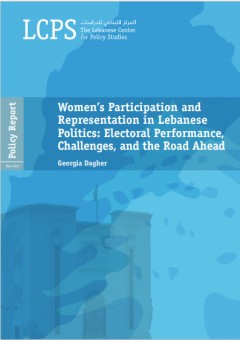
|
March 2021| Georgia Dagher
Women’s Participation and Representation in Lebanese Politics: Electoral Performance, Challenges, and the Road Ahead
The representation of women in Lebanese politics has always been disproportionately low. Not only is the historical framework of power in Lebanon patriarchal in nature, but the country’s political families...
|
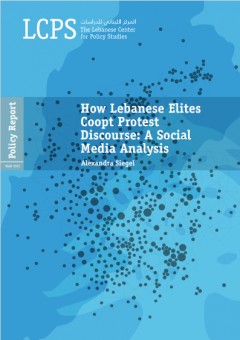
|
March 2021| Alexandra Siegel
How Lebanese Elites Coopt Protest Discourse: A Social Media Analysis
Massive protests ignited around Lebanon on October 17, 2019, with protestors blaming their sectarian elites for the country’s political, financial, and economic woes. This reports aims to understand how the...
|
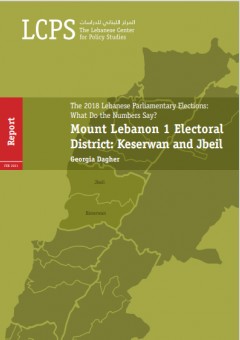
|
February 2021| Georgia Dagher
The 2018 Lebanese Parliamentary Elections: What Do the Numbers Say? Mount Lebanon 1 Electoral District: Keserwan and Jbeil
In the Lebanese parliamentary elections of 2018, the electoral district of Mount Lebanon 1—which combined Keserwan and Jbeil—saw a competitive race, with candidates from three electoral lists making it to...
|
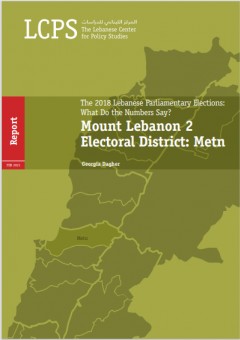
|
February 2021| Georgia Dagher
The 2018 Lebanese Parliamentary Elections: What Do the Numbers Say? Mount Lebanon 2 Electoral District: Metn
In the 2018 Lebanese parliamentary elections, Metn saw a highly competitive race, although there was no significant change in representation, with most parties and candidates retaining their seats. The winners...
|
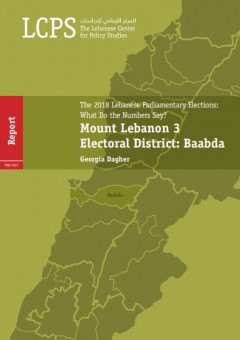
|
February 2021| Georgia Dagher
The 2018 Lebanese Parliamentary Elections: What Do the Numbers Say? Mount Lebanon 3 Electoral District: Baabda
In the Lebanese parliamentary elections of 2018, Baabda voters showed strong party loyalty, with nearly all Shia voters voting for Hezbollah and Amal, nearly all Druze voting for the Progressive...
|
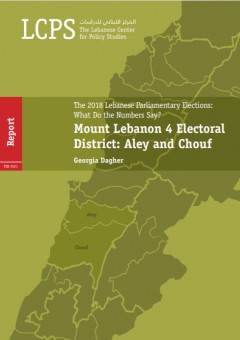
|
February 2021| Georgia Dagher
The 2018 Lebanese Parliamentary Elections: What Do the Numbers Say? Mount Lebanon 4 Electoral District: Aley and Chouf
The Lebanese parliament agreed to hold parliamentary elections in 2018—nine years after the previous ones. Voters in Aley and Chouf showed strong loyalty toward their sectarian parties and high preferences...
|
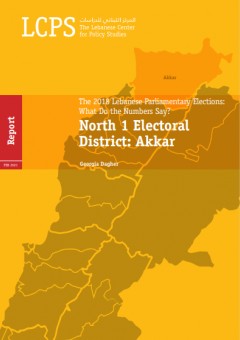
|
February 2021| Georgia Dagher
The 2018 Lebanese Parliamentary Elections: What Do the Numbers Say? North 1 Electoral District: Akkar
Lebanese citizens were finally given the opportunity to renew their political representation in 2018—nine years after the previous parliamentary elections. Akkar remained one of the Future Movement’s strongholds, and owed...
|
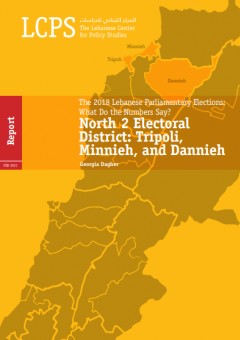
|
February 2021| Georgia Dagher
The 2018 Lebanese Parliamentary Elections: What Do the Numbers Say? North 2 Electoral District: Tripoli, Minnieh, and Dannieh
In the Lebanese parliamentary elections of 2018, the electoral district of North 2—which combined Tripoli, Minnieh, and Dannieh—saw a competitive race, with candidates from three electoral lists making it to...
|
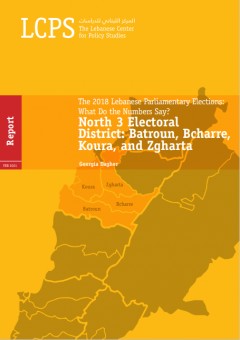
|
February 2021| Georgia Dagher
The 2018 Lebanese Parliamentary Elections: What Do the Numbers Say? North 3 Electoral District: Batroun, Bcharre, Koura, and Zgharta
In the Lebanese parliamentary elections of 2018, the electoral district of North 3, which combined Batroun, Bcharre, Koura, and Zgharta, saw a competitive race, leading to more diverse representation— although...
|
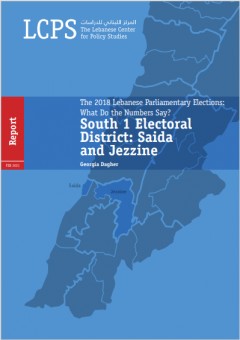
|
February 2021| Georgia Dagher
The 2018 Lebanese Parliamentary Elections: What Do the Numbers Say? South 1 Electoral District: Saida and Jezzine
In the Lebanese parliamentary elections of 2018, the districts of Saida and Jezzine (South 1) saw a highly competitive race, leading to more diverse representation at the parliamentary level. Each...
|
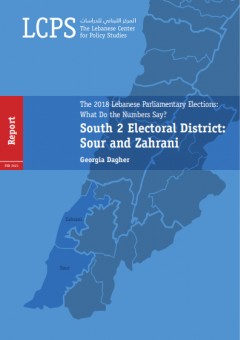
|
February 2021| Georgia Dagher
The 2018 Lebanese Parliamentary Elections: What Do the Numbers Say? South 2 Electoral District: Sour and Zahrani
The Lebanese parliament agreed to hold parliamentary elections in 2018—nine years after the previous ones, and two mandate extensions later. While Lebanese citizens were finally given the opportunity to renew...
|
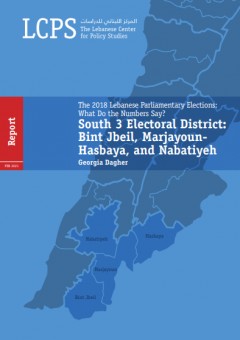
|
February 2021| Georgia Dagher
The 2018 Lebanese Parliamentary Elections: What Do the Numbers Say? South 3 Electoral District: Bint Jbeil, Marjayoun-Hasbaya, and Nabatiyeh
In the Lebanese parliamentary elections of 2018, the electoral race in the districts of Bint Jbeil, Marjayoun-Hasbaya, and Nabatiyeh (South 3) was highly uncompetitive, with all incumbents—members of Hezbollah, Amal,...
|
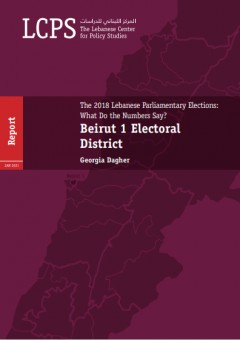
|
January 2021| Georgia Dagher
The 2018 Lebanese Parliamentary Elections: What Do the Numbers Say? Beirut 1 Electoral District
Lebanese citizens were finally given the opportunity to renew their political representation in 2018—nine years after the previous parliamentary elections. Despite this, voters in Beirut 1 were weakly mobilized, and...
|
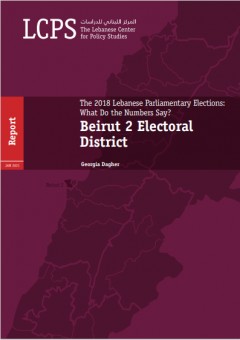
|
January 2021| Georgia Dagher
The 2018 Lebanese Parliamentary Elections: What Do the Numbers Say? Beirut 2 Electoral District
In the Lebanese parliamentary elections of 2018, the electoral district of Beirut 2 saw one of the lowest participation rates across the country. Nevertheless, there were significant variations across confessional...
|
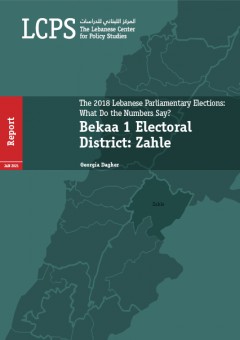
|
January 2021| Georgia Dagher
The 2018 Lebanese Parliamentary Elections: What Do the Numbers Say? Bekaa 1 Electoral District: Zahle
In the Lebanese parliamentary elections of 2018, the district of Zahle saw a highly competitive race, with candidates from three electoral lists making it to parliament. Each party had its...
|
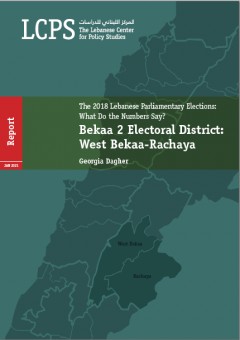
|
January 2021| Georgia Dagher
The 2018 Lebanese Parliamentary Elections:What Do the Numbers Say? Bekaa 2 Electoral District: West Bekaa-Rachaya
In the Lebanese parliamentary elections of 2018, the electoral race in the district of West Bekaa–Rachaya was highly contested, with the two winning lists—the first one formed by the Ittihad,...
|
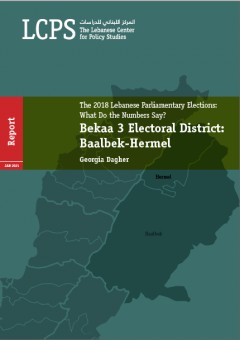
|
January 2021| Georgia Dagher
The 2018 Lebanese Parliamentary Elections:What Do the Numbers Say? Bekaa 3 Electoral District: Baalbek-Hermel
In the Lebanese 2018 parliamentary elections, the district of Baalbek-Hermel remained a stronghold of Hezbollah and Amal, however, the new proportional representation system led to some losses and allowed the...
|
.jpg)
|
January 2021| Daniel Garrote Sanchez
Understanding Turnout in the Lebanese Elections
Lebanon’s 2018 parliamentary elections, the first in nine years, saw a sizable decrease of voter turnout, with 49.7% of registered voters casting a ballot compared to 54% in 2009. The...
|
.jpg)
|
January 2021| Daniel Garrote Sanchez
An Assessment of Election Irregularities during the 2018 Parliamentary Elections
Lebanon held parliamentary elections in May 2018, the first time in nine years due to political stalemate. These were the first elections since the new electoral law was passed in...
|




